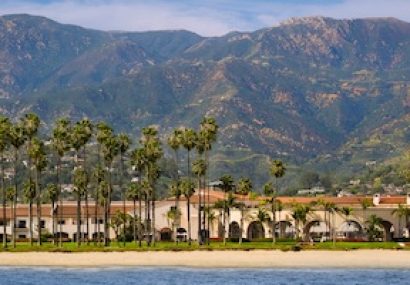
The U.S. Court of Federal Claims recently found that the government’s actions relating to the Addicks and Barker Dams (Dams) and the accompanying flooding of properties upstream from the Dams during Tropical Storm Harvey constituted a taking of a flowage easement under the Fifth Amendment of the U.S. Constitution. The court rejected the government’s defenses and found the government liable. The court will begin the process of selecting five test properties to determine damages beginning January 21, 2020. [In re Upstream Addicks and Barker Flood-Control Reservoirs, ___F.Supp.3d___, Case No. 17-9001L (Fed. Cl. Dec. 17, 2019).]
Background
Downtown Houston and the area surrounding the Dams have a long history of storms that produce intense rainfall. Against this backdrop, Congress authorized the U.S. Army Corps of Engineers (Corps) to build the Addicks and Barker Dams with the primary purpose of preventing downstream flooding, especially in downtown Houston.
The Corps deviated from the original plans when constructing the Dams. The Corps did not complete extra reservoirs that would have decreased the load on the main reservoirs behind the Dams, and did not complete a south canal that would have diverted extra water flows from the main reservoirs behind the Dams. As a result, the Dams were the only storage available to prevent downstream flooding, and they could only release water downstream toward Houston. In addition, the government acquired all land at and below a certain elevation behind each Dam, but the government knowingly did not acquire the full amount of land the Dams could inundate when filled to maximum design capacity. The Corps decided the expected damages of inundating the land was less than the cost of buying the additional land.
In the 1970s and 1980s significant land development occurred in the area immediately surrounding the government’s land. At this point, the Corps knew that flooding beyond the extent of the government-owned land upstream from the Dams was inevitable during a severe storm. By 1995, the area surrounding the reservoirs had become densely populated and the Corps still decided to take no action upstream. Information that the reservoirs would cause upstream flooding was publicly available at this point through maps, County warnings about the risks, and Corps public outreach efforts.
During Tropical Storm Harvey in 2017, the Corps operated the Dams according to the 2012 Water Control Manual, with the primary goal of protecting downstream development. The Corps let the reservoirs fill to record capacity to protect downstream property. The water rose far above the government-owned land, onto private property. 154,000 upstream homes were flooded, but the Corps avoided an estimated $7 billion in losses in Houston by prioritizing downstream development.
The Court of Federal Claims’ Decision
Takings Analysis
The main issue before the court was whether a taking occurred during the government’s construction, maintenance, and operation of the Dams. The court primarily relied on Arkansas Game & Fish Commission v. United States, 568 U.S. 23 (2012), see, https://www.supremecourt.gov/opinions/12pdf/11-597_i426.pdf) for the relevant factors to determine whether a taking had occurred.
First, the court analyzed the time and duration of the taking. The court determined that the government, through its construction, maintenance, and operation of the Dams, had taken a permanent flowage easement on the plaintiff’s properties because the flooding was likely to occur again in the future. The permanent nature of the invasion supported the finding of a taking.
Second, the court analyzed the severity of the government interference to determine whether the government’s actions were sufficiently substantial to justify a takings remedy. The court held the government action here was sufficiently severe to rise to a taking. The severity of the flooding was compounded by the fact that future storms like Harvey remain likely to occur, therefore the properties will continue to be at risk of flooding. The court was also persuaded by the fact that the present damage and likely future damage substantially declined the market value of plaintiffs’ properties.
Third, the court analyzed the benefit to the government and the public. When government actions appropriate private property for the public’s benefit, the private property owners are entitled to just compensation for a taking. The court determined that the public received a notable benefit from the government’s actions at the expense of upstream private property owners: the government protected downstream property owners from an estimated $7 billion in losses.
Fourth, the court analyzed whether the flooding was the foreseeable result of the government action. The government argued that the foreseeability inquiry only asks if flooding of this magnitude was foreseeable when the Dams were originally built. The court found this argument unpersuasive and decided that the foreseeability inquiry spans the entirety of the Dams’ construction, maintenance, and operation, into the present day. Given that the Corps had known for years that the flooding was a possibility, and more recently that flooding was almost inevitable, the flooding was foreseeable.
Fifth, the court addressed causation, which is a vital component of the foreseeability inquiry. Both parties agreed that ten of the 13 properties were flooded because of the governments’ actions. However, the government argued that its expert’s modeling showed three of the properties would have flooded even if the Dams were not in place. Ultimately, the court determined that causation was established for all 13 properties because the government’s modeling evidence was flawed.
Sixth, the court addressed whether the government intended a physical occupation. In short, the court found the government had the requisite intent to invade the plaintiffs’ properties because the Corps had known that storms capable of flooding these properties were likely to occur and still intended to occupy the property concerned.
Seventh, the court determined that the plaintiffs’ reasonable investment backed expectations must be investigated even in physical takings cases. The court held that the plaintiffs did have reasonable investment backed expectations that their properties would be free from flooding because they could not have been expected to know of the flooding risks. Overall, the court held that each of the factors identified in Arkansas Game & Fish Commission supported the finding of a taking of a flowage easement on all 13 of the plaintiffs’ properties.
The Government’s Defenses
The government argued that its actions were an exercise of police power during an emergency such that no taking existed, and that the doctrine of necessity absolved it of liability. The court found that the government was not responding to an emergency because the government had made calculated decisions to allow for this type of flooding years in advance after building, modifying, and operating the Dams in such a way that would flood the properties. The court also found the necessity doctrine unpersuasive because the it found the government was responsible for creating the emergency in the first place.
Conclusion and Implications
This case exhibits a detailed exercise of the Arkansas Game & Fish Commission takings analysis and provides that reasonable investment backed expectations should be analyzed even in physical-invasion takings cases. Practically, this case holds the government liable for the damages it caused by flooding the reservoirs behind the Addicks and Barker Dams during Tropical Storm Harvey. The court will begin the process of selecting five test properties to determine damages beginning January 21, 2020. The court’s decision is available online at:
https://ecf.cofc.uscourts.gov/cgi-bin/show_public_doc?2017cv9001-260-0
(William Shepherd IV, Rebecca Andrews)




